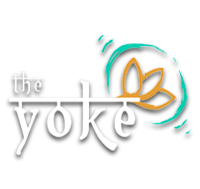A mantra is a pharse, word, or sound repeated to invoke a sense of prayer or to aid concentration in meditation. In the Shvetashvatara Upaniṣad (an ancient Yogic text) mantra recitation is likened to “uncovering the inner essence of something,” translates Rolf Sovik. (read on)

This image is an example of likhita japa. The written repetition of mantra.
The repetition of mantra is called japa.
When this is done in the written form it is named, likhita japa.
The art piece above is an example of how this written form can also be made it into an artful image. Here is another option.
“A mantra is therefore an instrument of the mind, a powerful sound or vibration that you can use to enter a deep state of meditation.”

A mantra is a word or series of words spoken aloud or silently to invoke spiritual qualities and/or create a sense solitude in the mind. “Mantras are commonly known as sentences, statements of truth and power… more subtle than that, are words… and more subtle than that, are letters… and more subtle than that, is pure sound, the primal vibration that exists in all.”

The difference between kīrtana and mantra?

A string of 108 beads are called a mala, traditionally known as sacred objects. The head bead, the ‘sumeru,” sits where the two sides of the loop of beads meet. Each bead is run through the hand with the thumb and middle finger of the hand. This provide a focus point for the mind. It also assists in counting each repetition of a mantra. The words and sounds of the mantra activate the divine powers of God and infuse the mala with a sacred power. It is taught that a mala holds each person’s individual energy form their japa. This sacredness is retained by placing the mala into a case or bag of some sort between japa sessions.
Why 108 beads?
The number 108 is a sacred number and has many interpretations:
- 108 is twelve times the number 9, which is the number of vinyasas (movements linked to breath) in a Sun Salutation
- 108 is the number of “Upaniṣads” comprising Indian philosophy’s “Vedic texts”.
- 108 is the number of names for Shiva (a Hindu god).
- 108 is the number of names for Buddha.
- 108 is the Chinese number representing “man”.
- 108 is the number of beads on a Catholic rosary.
- 108 is the number of beads on a Tibetan “mala” (prayer beads, analogous to a rosary).
- 108 is twice the number 54, which is the number of letters in the Sanskrit alphabet, one set of masculine (shiva) and one set of feminine (shakti).
- 108 is the number of Sutras in the Yoga Sutras
- 108 connects the sun, moon and earth as the average distance of the sun and moon to earth is 108 times their respective diameters
- 108 Marmas in the subtle body. (Marmas or marmasthanas are like energy intersections called chakras, except have fewer energy lines converging to form them)
- 108 forms of dance in the Indian traditions.


